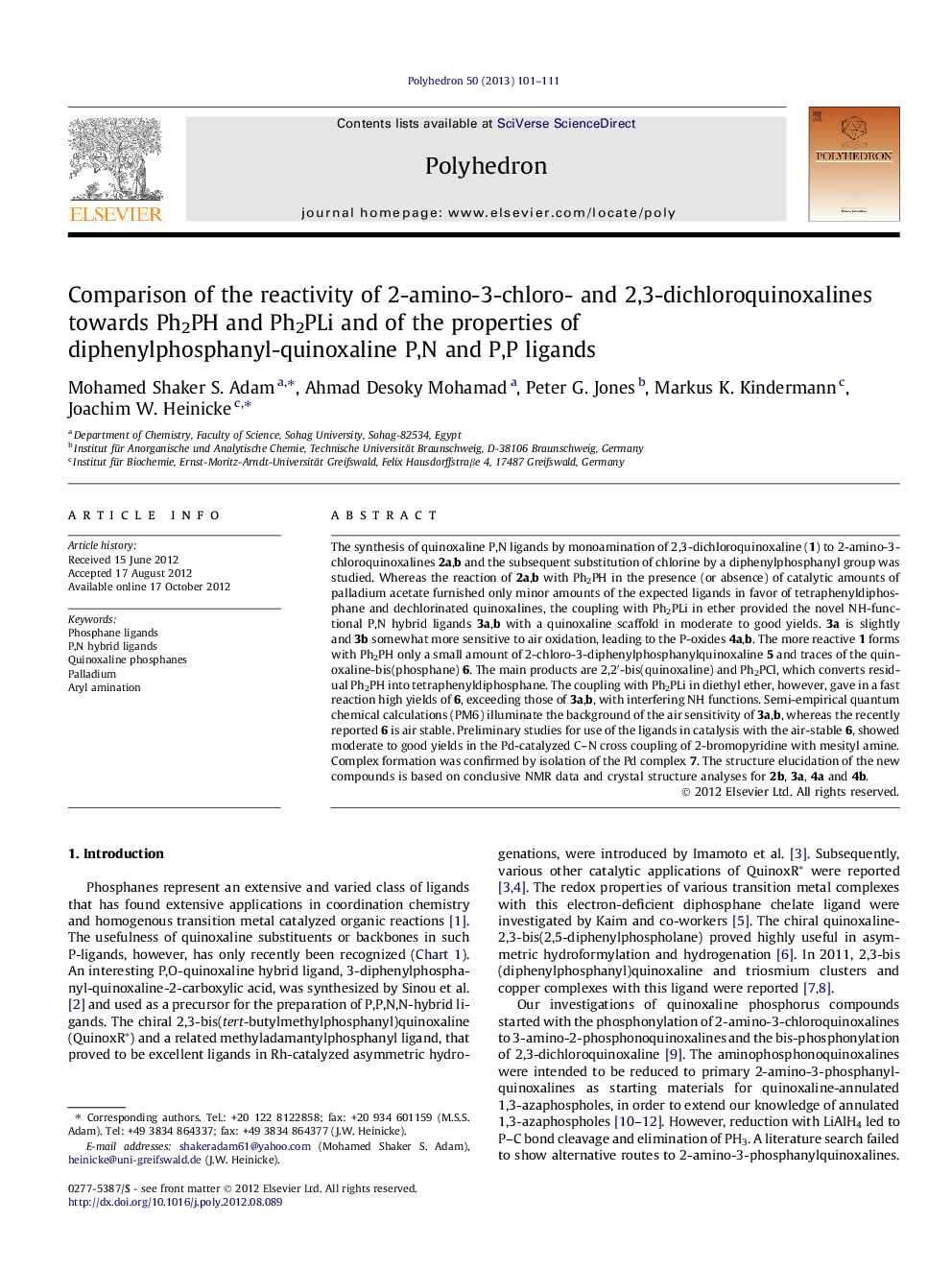| Article ID | Journal | Published Year | Pages | File Type |
|---|---|---|---|---|
| 1334627 | Polyhedron | 2013 | 11 Pages |
The synthesis of quinoxaline P,N ligands by monoamination of 2,3-dichloroquinoxaline (1) to 2-amino-3-chloroquinoxalines 2a,b and the subsequent substitution of chlorine by a diphenylphosphanyl group was studied. Whereas the reaction of 2a,b with Ph2PH in the presence (or absence) of catalytic amounts of palladium acetate furnished only minor amounts of the expected ligands in favor of tetraphenyldiphosphane and dechlorinated quinoxalines, the coupling with Ph2PLi in ether provided the novel NH-functional P,N hybrid ligands 3a,b with a quinoxaline scaffold in moderate to good yields. 3a is slightly and 3b somewhat more sensitive to air oxidation, leading to the P-oxides 4a,b. The more reactive 1 forms with Ph2PH only a small amount of 2-chloro-3-diphenylphosphanylquinoxaline 5 and traces of the quinoxaline-bis(phosphane) 6. The main products are 2,2′-bis(quinoxaline) and Ph2PCl, which converts residual Ph2PH into tetraphenyldiphosphane. The coupling with Ph2PLi in diethyl ether, however, gave in a fast reaction high yields of 6, exceeding those of 3a,b, with interfering NH functions. Semi-empirical quantum chemical calculations (PM6) illuminate the background of the air sensitivity of 3a,b, whereas the recently reported 6 is air stable. Preliminary studies for use of the ligands in catalysis with the air-stable 6, showed moderate to good yields in the Pd-catalyzed C–N cross coupling of 2-bromopyridine with mesityl amine. Complex formation was confirmed by isolation of the Pd complex 7. The structure elucidation of the new compounds is based on conclusive NMR data and crystal structure analyses for 2b, 3a, 4a and 4b.
Graphical abstractThe reactions of 1 and 2 towards Ph2PH and Ph2PLi, studied to synthesize the novel P,N ligands 3a,b in comparison with 6, display different selectivity for the main products, C-H and C-C versus C-P coupling. The background of higher air sensitivity of 3a,b compared to 6, preliminary studies of a Pd/6 catalyzed C-N coupling and crystal structures are reported.Figure optionsDownload full-size imageDownload as PowerPoint slide
